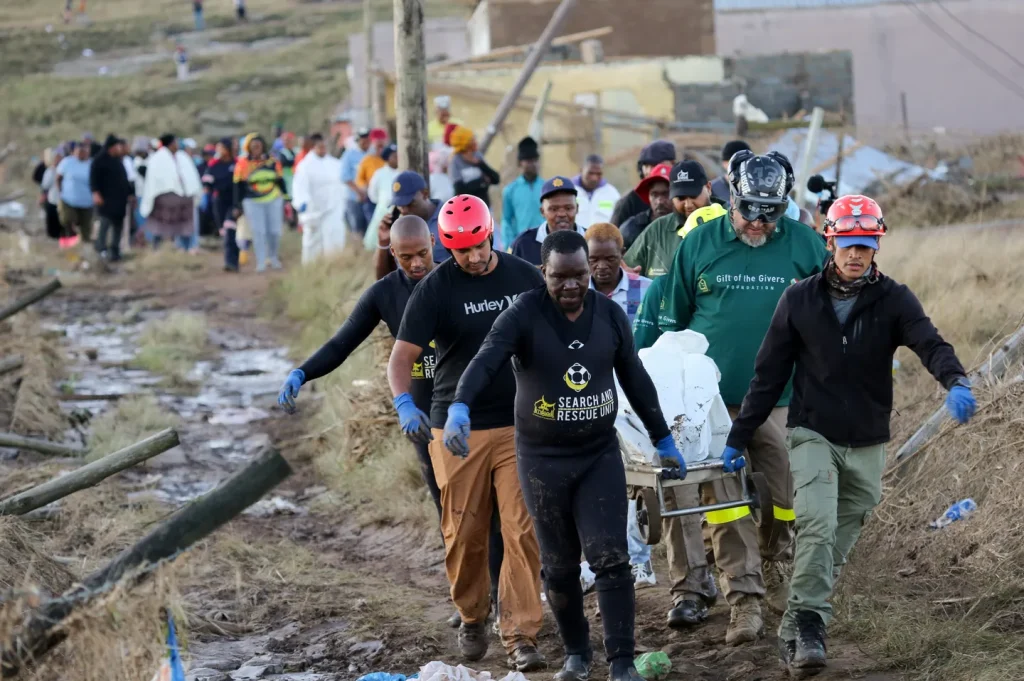Efforts to identify victims of the devastating floods that struck South Africa’s Eastern Cape province earlier this week remain ongoing, with authorities confirming that only 21 of the 78 deceased have been formally identified as of Friday. The deadly floods were triggered by heavy rainfall in the early hours of Tuesday, leading to widespread destruction and loss of life.
Minister of Cooperative Governance and Traditional Affairs (COGTA), Velenkosini Hlabisa, said the identification process has been significantly slowed by a lack of proper documentation among family members attempting to claim their loved ones’ bodies.
“To identify the deceased, you must first properly identify yourself,” Hlabisa said during a media briefing. “Many individuals arrive at mortuaries without any documents. Given the number of victims, this creates a complicated scenario that requires affidavits and verification to avoid errors—even when the identification appears obvious.”
Emergency teams have been working around the clock to recover bodies and search for those still missing. The disaster unfolded when a river in the Mthatha area burst its banks, sending torrents of water through homes and streets, sweeping away vehicles, houses, and residents in the darkness before dawn.
Premier of the Eastern Cape, Oscar Mabuyane, visited the affected areas and described the scenes as heart-wrenching. He said that the floodwaters reached heights of three to four meters in some places, catching many people unaware as they slept.
“It’s a tragic event that struck while people were most vulnerable. Entire families were caught in their sleep, with little to no warning,” Mabuyane told the South African Broadcasting Corporation (SABC). “Our rescue operations are further challenged by limited provincial resources, which hampers the speed at which we can reach every area.”
Local authorities have not yet confirmed how many people remain missing but emphasized that search and rescue missions would continue into the weekend. The scale of destruction across the region, particularly in rural and peri-urban communities, has made access difficult for emergency crews, with roads damaged and bridges washed away.
In the days ahead, government agencies and humanitarian organizations are expected to provide support to displaced families and begin assessments for infrastructure repair. The Eastern Cape province, already facing economic and service delivery challenges, now faces the additional burden of disaster recovery.
Officials have urged affected residents to report missing family members and cooperate with rescue and identification protocols to ensure the process proceeds as swiftly and accurately as possible.



